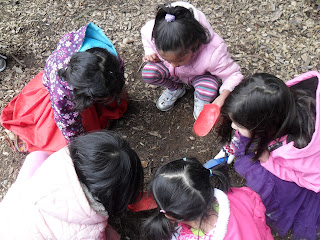Just about every kid loves them but I personally can only tolerate them. This doesn't mean that we can't learn about them. I recently put together a quick worm unit and here's what I did:
First I had to do some research because I didn't know much about worms and neither did my kids. They knew they were wiggly and lived in the dirt but they didn't know about their brains and hearts =P I did a simple internet search and gathered information from various websites
Then we made some worm art. First I colored spaghetti pasta by putting food coloring in water in a pot, boiling the water, and then adding the pasta. You'll want to use PLENTY of food coloring (I used 30 drops) so the noodles come out vibrant. Dip a piece of paper towel in the water and then squeeze the water out to see the color that your noodles will be. I made green and blue because I seemed to have a lot of extra blue and green food coloring. You can use whatever colors you would like.
I colored the noodles the night before and kept them in a container in the fridge and they were ready to use the next day.
I gave the kids small plates with glue on it and they dragged the colored noodles through the glue and then put them on brown pieces of construction paper. They thought this was a fun use of glue!
Then we let them dry over night. When I came to school the next day the brown paper curled A LOT and when I tried to straighten it the pasta broke =( so I'd suggest you make this on pieces of cardboard or remember to put weights on the papers to keep them straight as they dry.
Another wormy idea is to read the book Diary of a Worm and then watch the video!
Another day we went on a worm hunt in our playground. Each kid got a shovel and their instructions were to find the worm but NOT to take it out of the dirt but observe it in it's own habitat (this also might save the worm's life!) It was neat to hear exclamations of "I see him helping the dirt!" and "I see his hearts!"
My last idea was to let the kids make their own worms out of play dough. Play dough it always a hit!
I'm looking forward to adding to my worm unit as years pass. If *YOU* have any great wormy ideas I'd love to hear them!






















